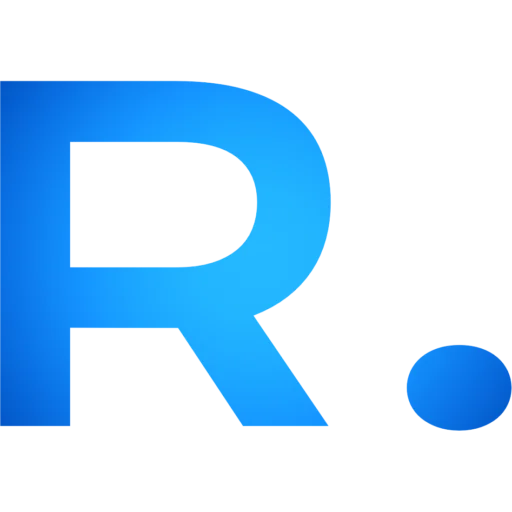لأي عملية إعادة تدوير ناجحة، تتطلب رحلة تحويل النفايات إلى مواد خام قيّمة دقةً في كل مرحلة. بعد تحويل زجاجات ما بعد الاستهلاك إلى رقائق نظيفة خلال نظام إعادة تدوير زجاجات PET عالي الأداءيبرز قرار حاسم: كيفية معالجة هذه الرقائق إلى شكلها الأكثر قابلية للتسويق. التحويل إلى حبيبات هو الحل، ولكن اختيار التكنولوجيا المناسبة أمر بالغ الأهمية.
الطريقتان السائدتان في هذه الصناعة هما التكوير التقليدي للخيوط والتكوير تحت الماء (UWP) الأكثر تطورًا. لكل منهما مزايا فريدة واعتبارات تشغيلية ومالية مختلفة. يقدم هذا الدليل مقارنة شاملة لمساعدتك في تحديد الحل الأمثل لعملية rPET الخاصة بك.
الحصان العامل: فهم عملية تكوير الخيوط
عملية تكوير الخيوط طريقة فعّالة ومعتمدة على نطاق واسع. سير العمل خطي وبديهي بصريًا:
- البثق: يتم ضغط مادة PET المنصهرة من خلال رأس القالب، مما يؤدي إلى تكوين خيوط متواصلة تشبه السباغيتي.
- تبريد: تنتقل هذه الخيوط عبر حمام مائي أو حوض حتى تبرد وتتصلب.
- إزالة المياه: تقوم سكين الهواء أو وحدة الشفط بنفخ الماء الزائد من سطح الخيوط.
- القطع: يتم تغذية الخيوط الجافة والمبردة إلى آلة التكوير، حيث تقوم دوارة عالية السرعة مزودة بشفرات قطع بتقطيعها إلى حبيبات أسطوانية.
طريقة الدقة: فهم عملية التكوير تحت الماء (UWP)
إن عملية التكوير تحت الماء هي عملية أكثر تكاملاً وتلقائية، وتتميز بالدقة والتناسق.
- البثق والقطع: يُضغط البولي إيثيلين تيريفثالات المُعاد تدويره (rPET) المُصهور عبر صفيحة قالب مُلامسة مباشرةً لنظام دوران الماء. تُقسّم شفرات دوارة البوليمر إلى كريات فور خروجه من سطح القالب، تحت الماء.
- التبريد والنقل: يتم تجميد الكريات الكروية المشكلة حديثًا على الفور بواسطة الماء ونقلها على شكل ملاط بعيدًا عن رأس القالب.
- إزالة المياه: يتم تغذية الملاط إلى مجفف الطرد المركزي، الذي يدور بسرعة عالية لفصل الماء عن الحبيبات، مما يؤدي إلى الحصول على منتج جاف نهائي.
مقارنة مباشرة: ستراند مقابل أندر ووتر
يتطلب اختيار نظام التكوير لـ rPET تحليلًا دقيقًا للعديد من العوامل الرئيسية.
1. جودة الحبيبات واتساقها
- تكوير الخيوط: يُنتج حبيبات أسطوانية متجانسة. ومع ذلك، فإن هذه العملية عرضة لكسر الخيوط، مما قد يؤدي إلى اختلافات في طول الحبيبات (الحبيبات الطويلة) وتكوّن الغبار أو الجسيمات الدقيقة. تعتمد الجودة بشكل كبير على مهارة المُشغّل أثناء التشغيل.
- التكوير تحت الماء: يُنتج حبيبات متجانسة للغاية، كروية أو عدسية الشكل، مع اختلافات طفيفة في الحجم والشكل. تُنتج عملية التبريد الفوري كمية منخفضة جدًا من الغبار والغرامات. يُعتبر UWP عمومًا منتجًا عالي الجودة وأكثر ثباتًا من الحبيبات، وهو ما يُطلب غالبًا في التطبيقات المتميزة.
2. المتطلبات التشغيلية والتعقيد
- تكوير الخيوط: العملية يدوية أكثر، خاصةً أثناء بدء التشغيل، حيث يقوم المُشغِّل بتمرير الخيوط يدويًا من رأس القالب إلى آلة التحبيب. ورغم أن هذا يتطلب جهدًا، إلا أنه يُسهِّل على المُشغِّلين استكشاف الأخطاء وإصلاحها بصريًا.
- التكوير تحت الماء: هذا نظام ذو حلقة مغلقة عالي الأتمتة، ويتطلب تدخلاً أقل من المُشغّل أثناء التشغيل. ومع ذلك، فإن العملية أكثر تعقيدًا وحساسية. ويتطلب عملية بثق مستقرة للغاية (تدفق الصهر، والضغط، ودرجة الحرارة) ليعمل بشكل صحيح. وعادةً ما يتطلب التشغيل والصيانة مهارة فنية عالية.
3. الاستثمار الأولي والبصمة
- تكوير الخيوط: الاستثمار الرأسمالي الأولي لخط تكوير الخيوط أقل بكثير من نظام UWP. المعدات أبسط ميكانيكيًا. ومع ذلك، قد يستغرق الأمر وقتًا طويلاً نظرًا لحوض التبريد المطلوب.
- التكوير تحت الماء: تتطلب هذه التقنية تكلفة استثمار أولية أعلى، بفضل رأس القطع المصمم بدقة، ونظام المعالجة بالماء، ومجفف الطرد المركزي. إلا أن المساحة الإجمالية غالبًا ما تكون أصغر حجمًا.
4. أفضل تطبيقات التصوير المقطعي بالإصدار البوزيتروني المُعاد تشكيله (rPET)
- تكوير الخيوط: خيار ممتاز وفعّال من حيث التكلفة لإنتاج حبيبات البولي إيثيلين تيريفثالات المعاد تدويره (rPET) للأغراض العامة، وتركيبها، والتطبيقات التي تُقبل فيها اختلافات طفيفة في شكل الحبيبات. وهو خيار موثوق للعمليات التي يُعَدّ فيها تقليل التكلفة الرأسمالية الأولية أولوية.
- التكوير تحت الماء: الخيار الأمثل للتطبيقات المتطورة التي تتطلب تجانسًا مثاليًا للحبيبات لضمان معالجة مستقرة. يشمل ذلك حقن الأجزاء ذات الأشكال الهندسية المعقدة، ومكونات السيارات، وتركيب البلاستيك الهندسي عالي القيمة حيث يكون الاتساق أمرًا لا غنى عنه.
جدول الملخص
| ميزة | تكوير الخيوط | التكوير تحت الماء (UWP) |
| شكل الحبيبات | أسطواني | كروي / عدسي |
| جودة الحبيبات | من جيد إلى ممتاز، احتمالية فرض غرامات | ممتاز إلى ممتاز، موحد للغاية |
| تعقيد | بدء تشغيل أقل، وأكثر يدويًا | أعلى، آلي، وأكثر حساسية |
| التكلفة الأولية | أدنى | أعلى |
| بصمة القدم | أطول | أكثر إحكاما |
| مثالي ل | العمليات العامة والحساسة للتكلفة | تطبيقات عالية الجودة، اتساق مثالي |
الخلاصة: اتخاذ الاختيار الصحيح
يُعدّ الاختيار بين تكوير الخيوط وتحبيبها تحت الماء قرارًا استراتيجيًا. إذا كان نموذج عملك يركز على إنتاج بولي إيثيلين تيريفثالات مُعاد تدويره (rPET) موثوقًا وفعّالًا من حيث التكلفة لسوق واسعة، فإنّ انخفاض الاستثمار الأولي وسهولة تشغيل خط تكوير الخيوط يجعله خيارًا جذابًا. أما إذا كان هدفك استهداف أسواق متميزة تتطلب أعلى درجات الاتساق والجودة، فإنّ الإنتاج المتفوق وأتمتة نظام التكوير تحت الماء يبرران هذا الاستثمار المرتفع.
في النهاية، يعتمد نجاح أيٍّ من طريقتي التحبيب على جودة المادة المُدخلة. رقاقة نظيفة وجافة ومتماسكة، تُنتج بواسطة حبل غسيل بلاستيكي قوي من مادة PET، يعد أمرًا أساسيًا لتحقيق حبيبات نهائية عالية الجودة.
في Energycle، يمكننا مساعدتك في تحليل متطلباتك المحددة لتحديد أفضل حل معالجة ذي قيمة مضافة للمواد المعاد تدويرها. اتصل بفريقنا الفني لمناقشة مشروعك.



